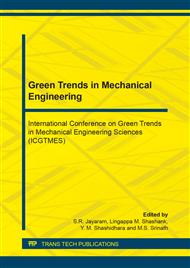p.109
p.115
p.122
p.127
p.134
p.139
p.144
p.152
p.158
Clean Energy, its Prospect and Challenges in India: A Literature Review
Abstract:
The survey primarily deals with the evaluation of green technology development in India. With the depletion of fossil fuels resources, increase of supply security issues, and menace of climate change; clean energy through green technology may offer the best possibilities and outlook for their long-term replacement. The United Nations designated the decade 2014–2024 as the “Decade of Sustainable Energy for All”. Achieving feasibility in energy employment is expected to create a cleaner environment, broader access to electricity, better energy efficiency, and result in greater investment in green technology. Clean energy initiative is not only to substitute the conventional source of energy, but for protecting the mother earth for the future mankind. Emblematic lantern and the oil lamp were the most prominent sources of light at nights for Indians when it achieved independence as it was suffering from severe electricity deficit. However scenario has changed after six decades. As per census 2011, out of 191.9 million household 107.2 million households were electrified. India is, however, aiming high in this domain, with a target to attain 175 GW of installed renewables capacity by 2022 which include 100 GW of solar, 60 GW of wind, 10 GW of bio power and 5 GW of small hydro-power. This survey has taken up to trace the research trends in India to fulfill the mission to almost substitute the conventional energy.
Info:
Periodical:
Pages:
134-138
Citation:
Online since:
November 2019
Keywords:
Price:
Сopyright:
© 2019 Trans Tech Publications Ltd. All Rights Reserved
Share:
Citation:


